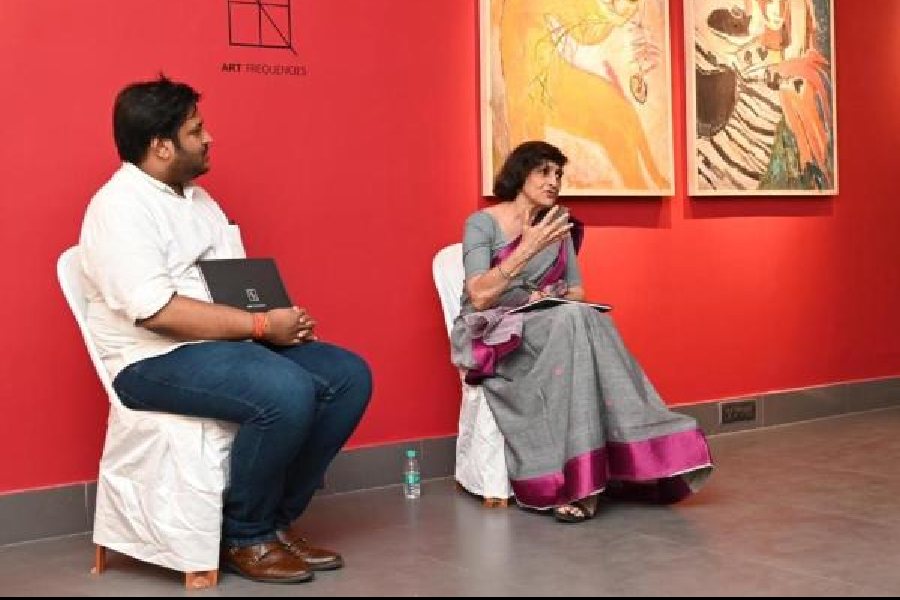Artist Shanu Lahiri’s works returned to the public domain for the first time after her death in 2013 with an exhibition of her paintings from the family collection.
“Shanu Lahiri, Transitions and Intersections” is being held at Gallery Art Frequencies on Park Street, a road where Lahiri exhibited for the first time at a place called Artistry House, said the curator of the show, Vinayak Pasricha.
Delivering a talk on the artist, historian Tapati Guha Thakurta spoke of a museum project that Damayanti Lahiri, the artist’s daughter, has taken up.
“Bringing back Shanu Lahiri in public memory one must remember her house in Lake Town. The house was like a museum to her, it was full of her collection, her works. The Centre for Studies in Social Sciences has documented her works and for that, we visited her house. It took us three days to take out her paintings and bring them up to the terrace for photography and documentation. Shanu Mashi worked on a big scale, with large canvases. It was lovely seeing how she re-engaged with her works as they were taken out. She was documenting, giving them titles and dates,” said the art historian.
The artist herself was an archivist. She had illustrious brothers, writer Kamal Mazumdar and artist Nirode Mazumdar, whose letters, sketches and photographs were being catalogued and documented by her.
“As she was going through a scrapbook, she came across old photographs, catalogues, her photographs in Paris, it was like the artist was running a cultural salon,” said Guha Thakurta.
She started the first women artists’ collective called The Group with Meera Mukherjee, Karuna Saha, Santosh Rohatgi and Shyamasree Basu.
“She, Meera Mukherjee and Karuna Saha were the first modern professional artists. Shanu Lahiri entered the Government College of Art and Craft in 1947, Karuna Saha joined, too. They were the women artists at a largely male-dominated art college. They broke out stylistically from the Indian and Santiniketan gharana and made a niche for themselves,” said Guha Thakurta.
They were also travelling abroad, Shanu Lahiri went to Paris on an Indo-French scholarship, Karuna Saha to Florence and Meera Mukherjee to Germany.
“They left behind home and family to live abroad. They carried their culture with them and wanted to steal the thunder from European artists, opening up their vocabulary. They returned to practise what they imbibed,” said Guha Thakurta.
Lahiri went to École du Louvre, where she learnt art history and art appreciation and at the Académie Julian, where she learnt painting. She was largely influenced by Picasso, Matisse, and Douanier-Rousseau.
In the 80s, her street art took Kolkatans by surprise as she painted murals on Kolkata’s walls that were much defaced by political parties.
The mural on Justice Chandra Madhab Road, opposite the Phillips office, was a landmark that remained for a long time. Her work Parama was removed from the island on EM Bypass after which it was named. She also made Durga idols for the Bakulbagan Puja, which was started by Nirode Mazumdar.
“She gave a lot to the city but the city was not kind in preserving her work,” lamented Guha Thakurta .
